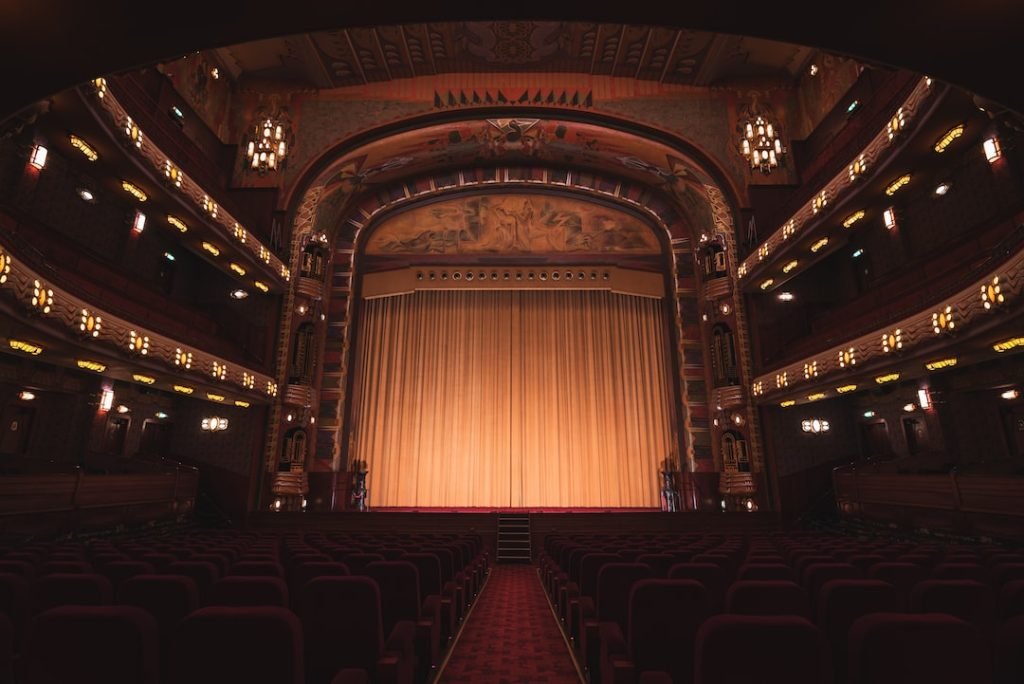

Norwegian Vocabulary for Theater and Performing Arts
Norwegian theater and performing arts have a rich history and vibrant contemporary scene. From traditional folk performances to avant-garde experimental theater, Norway offers a diverse range of theatrical experiences. Whether you are an actor, director, playwright, or simply a theater enthusiast, learning Norwegian vocabulary related to theater and performing arts can greatly enhance your understanding and appreciation of the art form.
Table of Contents
ToggleKey Takeaways
- Norwegian theater and performing arts vocabulary is essential for understanding and participating in the country’s rich cultural scene.
- Common terms for stage directions in Norwegian include “venstre” (left), “høyre” (right), “opp” (up), and “ned” (down).
- Norwegian vocabulary for acting and performance techniques includes “karakter” (character), “improvisasjon” (improvisation), and “monolog” (monologue).
- Understanding Norwegian words for stage props and costumes is important for creating a believable and immersive theatrical experience.
- Key terms for lighting and sound in Norwegian theater include “lysdesign” (lighting design), “lydeffekt” (sound effect), and “mikrofon” (microphone).
Common Terms for Stage Directions in Norwegian
Stage directions are essential for actors and directors to understand the blocking and movement on stage. In Norwegian theater, there are several common stage directions that are used to indicate specific actions or positions. For example, “venstre” means left, “høyre” means right, “fram” means forward, and “bak” means backward. These directions can be combined to create more complex movements, such as “venstre fram” (left forward) or “høyre bak” (right backward).
Norwegian Vocabulary for Acting and Performance Techniques
Acting and performance techniques are crucial for actors to effectively portray characters and convey emotions on stage. In Norwegian, there are several terms that describe different acting techniques. For example, “metode skuespill” refers to method acting, which emphasizes the use of personal experiences and emotions to create authentic performances. Another term is “fysisk teater,” which translates to physical theater and focuses on the body as a primary means of expression.
Understanding Norwegian Words for Stage Props and Costumes
Stage props and costumes play a vital role in creating the visual world of a theatrical production. In Norwegian theater, there are specific terms for different types of props and costumes. For example, “rekvisitt” is the word for prop, while “kostyme” is used for costume. Additionally, there are terms for specific types of props and costumes, such as “sverd” for sword and “kjole” for dress.
Key Terms for Lighting and Sound in Norwegian Theater
Lighting and sound design are essential elements of any theatrical production. In Norwegian theater, there are specific terms for different lighting and sound techniques. For example, “lysdesign” refers to lighting design, while “lydeffekt” is used for sound effect. Other terms include “spotlight” for spotlight and “mikrofon” for microphone.
Norwegian Words for Theater Genres and Styles

Norwegian theater encompasses a wide range of genres and styles, each with its own unique characteristics. Learning the Norwegian vocabulary for theater genres and styles can help you better understand and appreciate different types of performances. For example, “drama” is the word for drama, while “komedie” is used for comedy. Other terms include “musikal” for musical and “opera” for opera.
Vocabulary for Scriptwriting and Play Analysis in Norwegian
Scriptwriting and play analysis are important skills for playwrights, directors, and actors. In Norwegian theater, there are specific terms for different aspects of scriptwriting and play analysis. For example, “manus” is the word for script, while “dramaturgi” is used for dramaturgy. Other terms include “dialog” for dialogue and “sceneanvisning” for stage direction.
Expressions for Critiquing and Evaluating Norwegian Performances
Critiquing and evaluating performances is an essential part of the theater industry. In Norwegian, there are specific expressions that can be used to provide feedback on a performance. For example, “sterk skuespillerprestasjon” translates to strong acting performance, while “kreativ regi” means creative direction. Other expressions include “god scenografi” for good set design and “imponerende koreografi” for impressive choreography.
Norwegian Vocabulary for Theater Production and Management
Theater production and management involve a wide range of tasks and responsibilities. In Norwegian theater, there are specific terms for different aspects of production and management. For example, “produksjon” is the word for production, while “regissør” is used for director. Other terms include “scenograf” for set designer and “kostymedesigner” for costume designer.
Tips for Improving Your Norwegian Theater and Performing Arts Vocabulary
Improving your Norwegian theater and performing arts vocabulary can be a fun and rewarding process. Here are some tips to help you expand your vocabulary:
1. Watch Norwegian theater performances: Watching performances in Norwegian will expose you to the language in a theatrical context and help you learn new words and phrases.
2. Read Norwegian plays: Reading plays in Norwegian will not only improve your language skills but also familiarize you with the specific vocabulary used in theater.
3. Take acting or theater classes in Norwegian: Taking classes in Norwegian will provide you with opportunities to practice your language skills while learning about theater.
4. Use flashcards or vocabulary apps: Flashcards or vocabulary apps can be a useful tool for memorizing new words and phrases related to theater and performing arts.
5. Practice with a language partner: Finding a language partner who is also interested in theater can be a great way to practice your vocabulary and have conversations about the subject.
Learning Norwegian vocabulary related to theater and performing arts is essential for anyone interested in the art form. Whether you are an actor, director, playwright, or simply a theater enthusiast, understanding the specific terms used in Norwegian theater can greatly enhance your experience and appreciation of the performances. By familiarizing yourself with common stage directions, acting techniques, props and costumes, lighting and sound terms, theater genres and styles, scriptwriting and play analysis terms, expressions for critiquing performances, and theater production and management terms, you will be better equipped to engage with the Norwegian theater scene. So, keep learning and practicing, and immerse yourself in the world of Norwegian theater and performing arts.
If you want to learn Norwegian, you can register for classes here. We look forward to hearing from you and helping you become fluent in Norwegian.





